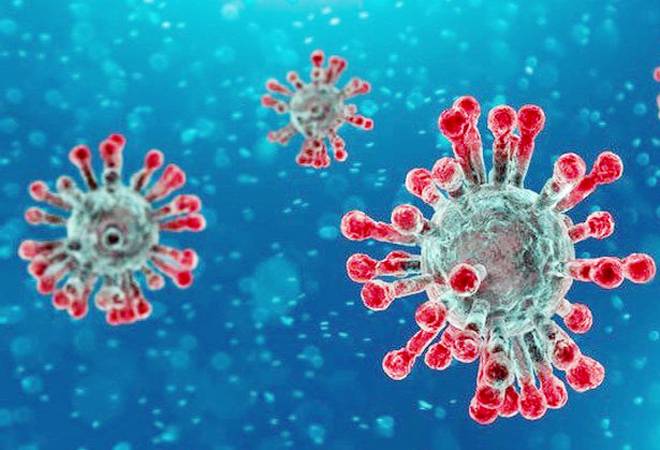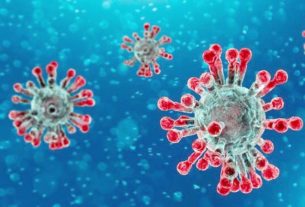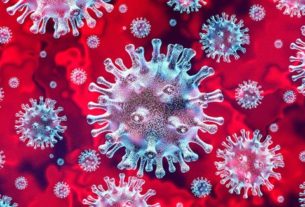From Our Bureau
26TH MAY 2020
A total of 1,45,380 confirmed cases of COVID-19 have been reported in the country so far and the death toll mounted to 4,167 on Tuesday. The number of cases under active medical supervision now is 77,103. So far, a total of 60,491 patients have been cured.
Recovery rate in the country continues to improve and presently it is 41.61 percent. The case fatality rate in the country is also showing a downward trend from 3.30 percent (as on 15th April) to around 2.87 percent at present which is amongst the lowest in the world. The global average for case fatality is presently around 6.45 percent.
An analysis of case mortality per lakh population indicates that India has about 0.3 deaths per lakh population which is amongst the lowest in the world against the statistics of 4.4 deaths per lakh population for the world. The relatively low death figures, both in terms of mortality per lakh population and case fatality rate, represent timely case identification and clinical management of the cases.
Government of India along with the States/Union Territories is taking several steps for prevention, containment and management of COVID-19 through a graded, pre-emptive and pro-active approach. These are being regularly reviewed and monitored at the highest level.
The focus of the administration continues to be on prevention and containment measures so as to limit the spread of infection. Following of required hand hygiene, respiratory hygiene and effective sanitation of frequently touched surfaces are critical to avoid getting the infection.
There is a need to ensure COVID appropriate behaviour to tide over this crisis. This also includes regular use of the masks/face covers and working towards protecting the elderly and vulnerable. Maintenance of physical distancing in public is the social vaccine the world currently has against the novel Corona virus.
India has rapidly increased its testing capacity and is on track to meet the emerging requirements. India is now testing an approximate 1.1 lakh samples per day. Capacity has been increased by augmenting number of labs, shifts, RT-PCR machines and manpower. As of today, India has 612 total labs, 430 run by ICMR and 182 in the private sector to test the population for COVID-19 infection.
Guidelines have been issued to States/UTs advising immediate testing for symptomatic and home quarantine for asymptomatic migrant workers. Most States/UTs have been working with National Tuberculosis Elimination Program (NTEP) to deploy TrueNAT machines for COVID-19 testing. Indigenous manufacturers of RT-PCR-kits, VTM, swabs & RNA extraction kits have been identified and their production facilitated in the last few months.
Ms Preeti Sudan, Health Secretary and Rajesh Bhushan, OSD, MoHFW along with senior officers of the Health Ministry held a high-level review meeting with the Chief Secretaries, Health Secretaries and NHM Directors of Uttar Pradesh, Bihar, Jharkhand, Chhattisgarh and Madhya Pradesh. These states are witnessing a surge in COVID-19 cases since the last three weeks as lockdown rules have been eased and inter-state migration has been allowed.
The States were briefed on the individual case trajectory with respect to case fatality rate, doubling time, testing per million and confirmation percentage. Factors that need to be focused for effective containment strategy were pointed out such as perimeter control, diligent house to house survey through special surveillance teams, testing, active contact tracing and effective clinical management.
It was also emphasized that each containment zone has to be analysed to check the trends and adopt course correction measures through proper formation and implementation of micro plans. The activities within the Buffer Zone were also reiterated.
It was reiterated that States need to pay focused attention on assessing the existing the available health infrastructure in terms of quarantine centres, hospitals with ICU/Ventilator/oxygen beds etc., and to strengthen them looking at the need assessment for the next two months. Use of data emerging from Aarogya Setu was also pointed out to the participating States.
Regarding non-COVID essential health services, States were reminded that immediate measures need to be taken to continue essential health programs for TB, Leprosy, COPD, Non-communicable diseases like hypertension, diabetes, treatment for injuries and trauma due to accidents need to be continued.
It was advised that Mobile Medical Units (MMUs) can be stationed at quarantine centres; temporary sub-health centres could be set up in existing buildings and additional frontline workers like RBSK teams can be utilized. It was advised the link with Ayushman Bharat – Health and Wellness Centres needs to be established so that immediate health check-ups can be arranged. Tele-medicine services can to be rolled out from these centres. Temporary sub health centres could also be operationalised in existing buildings with additional deployment of health workers.
To meet with the surge in incoming migrant workers, ASHAs and ANMs can be given additional incentives. The States were advised to ensure implementation of PPE guidelines with respect to the outreach teams. States were asked to rope in NOGs, SHGs, private hospitals, volunteer groups etc., for augmenting their strength.
The States were advised to pay special attention to vulnerable groups like pregnant women, under 5 yrs children, elderly, those with co-morbidities and also mobilize the Anganwadi workforce in the districts. It was stressed that nutrition needs to be checked among children under the age of five and recommend them to nutrition rehabilitation centres (NRCs). (eom)



